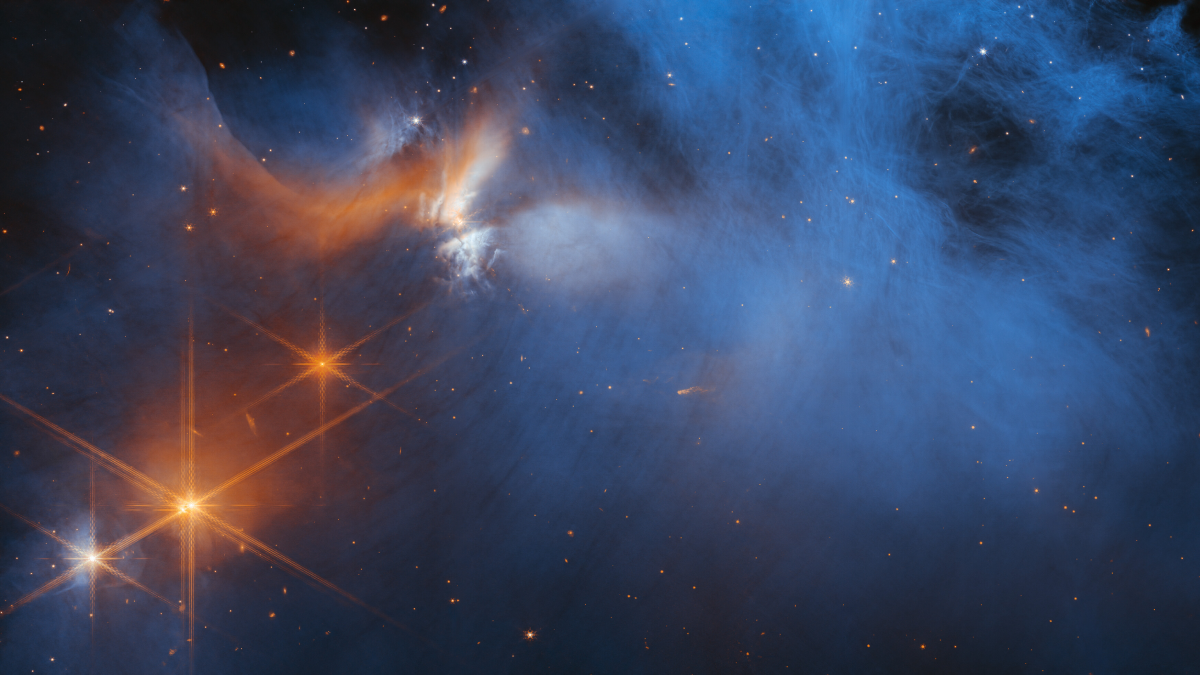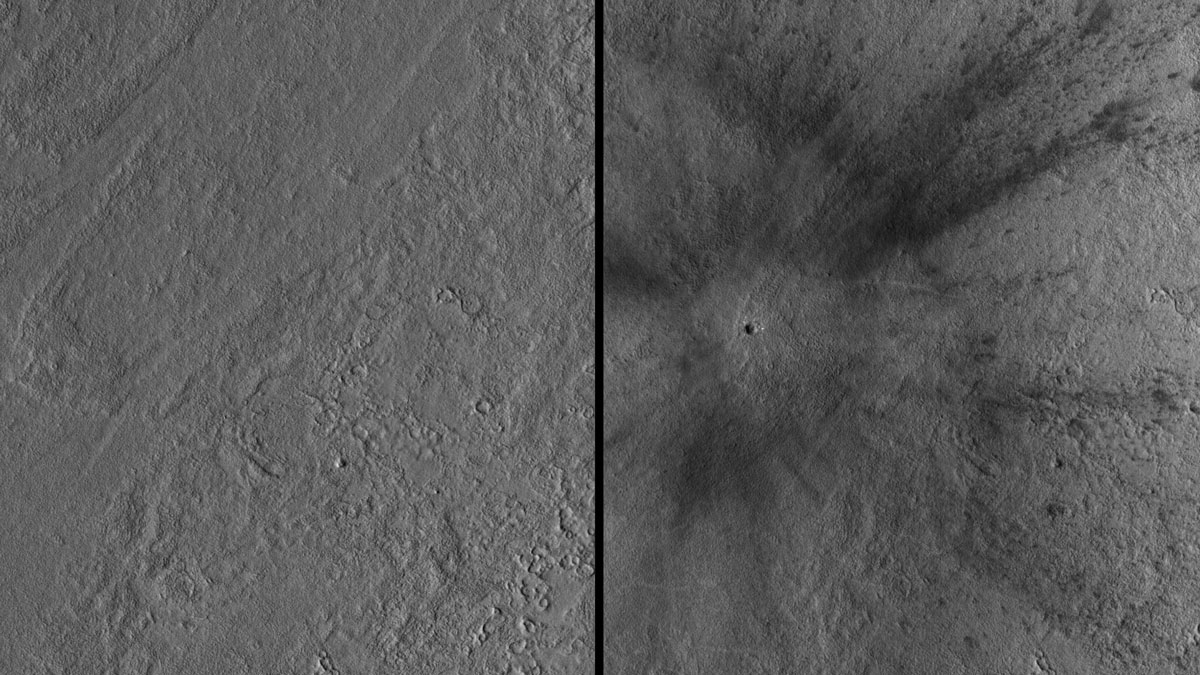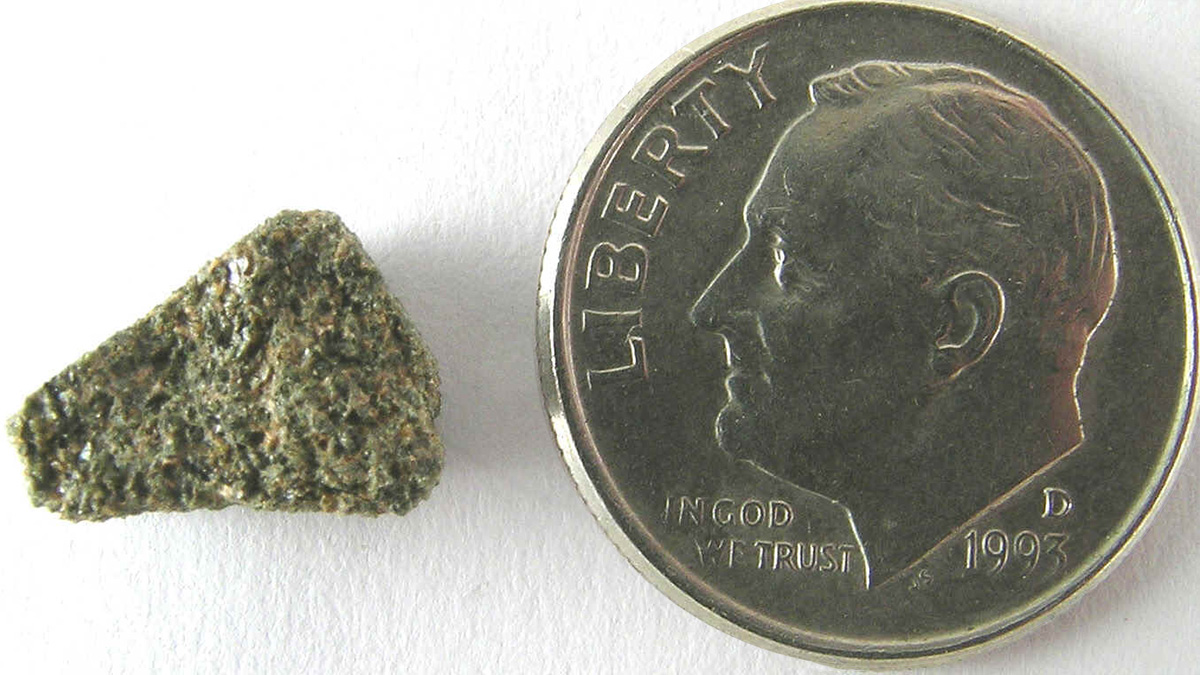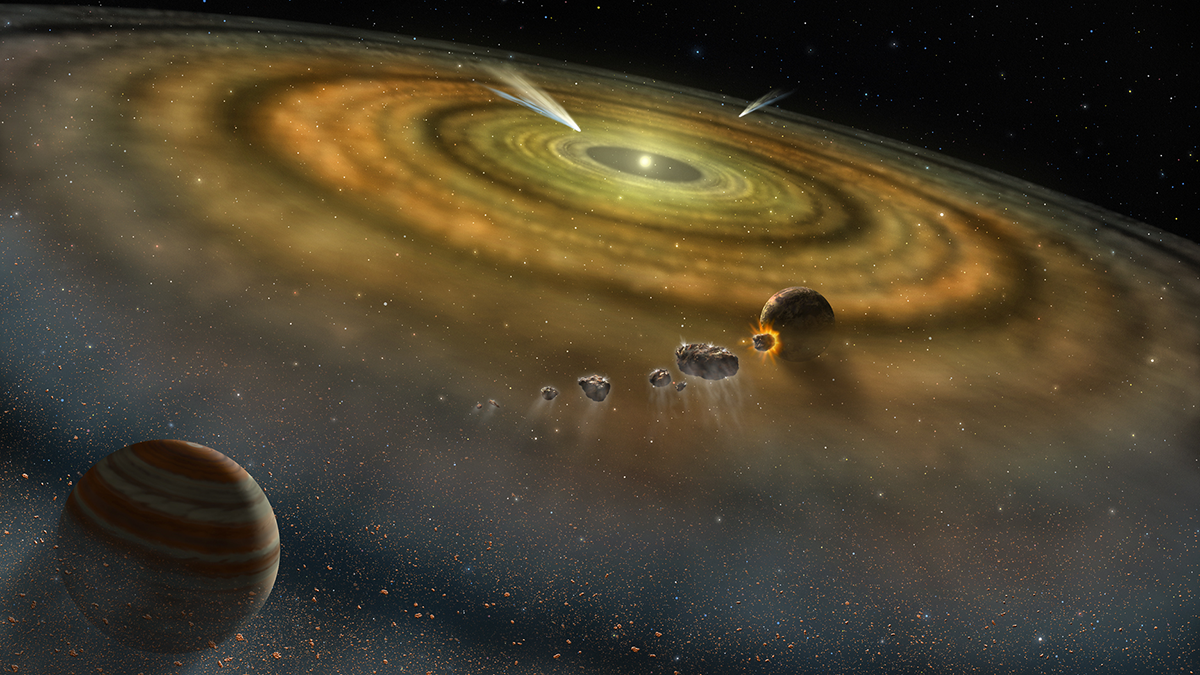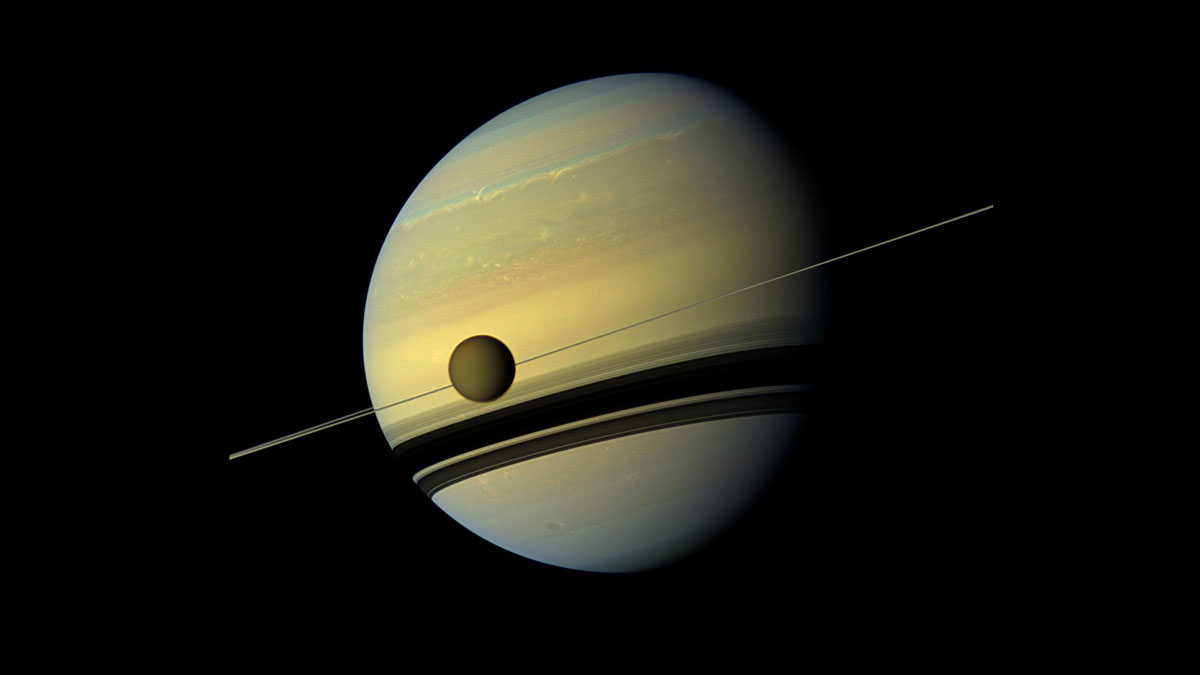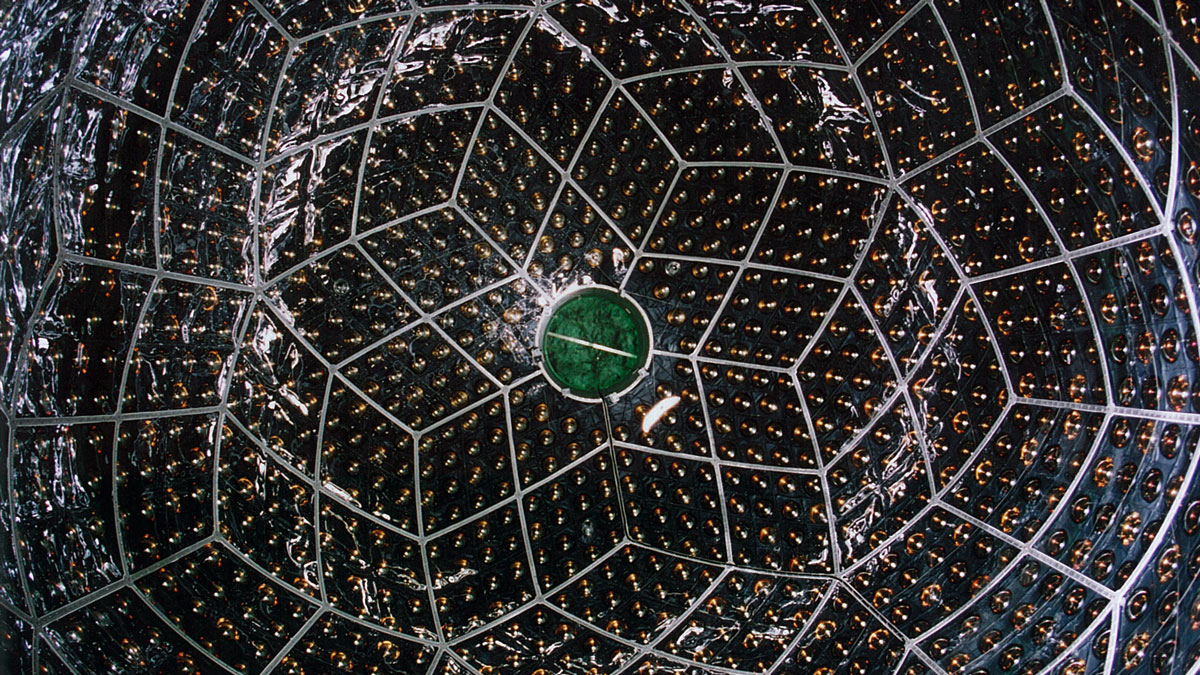The dwarf planet’s ring makes astronomers question whether a long-held theory about ring and moon formation needs tweaking.
planetary evolution
Complex Organic Ices Discovered in a Star-Forming Cloud
The presence of complex organic molecules such as methanol, ethanol, and acetaldehyde in a molecular cloud suggests that these and simpler ices might be available to planetary systems right from the start.
Meteor Impact Could Inform Martian Mysteries
The impact sent surface waves rippling over the Martian surface all the way to NASA’s InSight lander, giving scientists a rare view of the planet’s outer layer.
Martian Meteorites Offer a Tantalizing Glimpse of the Red Planet
By studying these literal chunks of Mars, scientists are learning more about the Red Planet’s deep interior and impact history.
Isótopos de criptón proporcionan nuevos indicios sobre el pasado de los planetas
Para determinar cómo los elementos cruciales para el desarrollo de la vida llegaron a la Tierra, los científicos estudian los gases nobles. Actualmente, métodos mejorados traen consigo nuevos indicios a partir del criptón, el gas noble más enigmático.
Long-Gone Moon Could Explain Birth of Saturn’s Rings
Named Chrysalis, the moon could have disintegrated during a close encounter with the gas giant roughly 100 million years ago.
Massive Stars May Commit Grand Theft Planet
New simulations show that planets around young, massive stars may have been captured or stolen rather than homegrown.
Estimating Uranium and Thorium Abundance with Geoneutrinos
Terrestrial electron antineutrino observations provide new constraints on the contributions of radiogenic heat in the mantle.
This One Simple Trick Helps Us Understand How Much Water Is in Martian Lavas
Understanding how much water is in Martian magma is vital for understanding whether the Red Planet had seas in its early history.
Swinging Strength of Earth’s Magnetic Field Could Signal Inner Core Formation
The magnetic record stored in rocks documents the liquid core’s behavior and possibly when the inner core formed. Whether it formed half a billion or more than a billion years ago, however, is up for debate.


